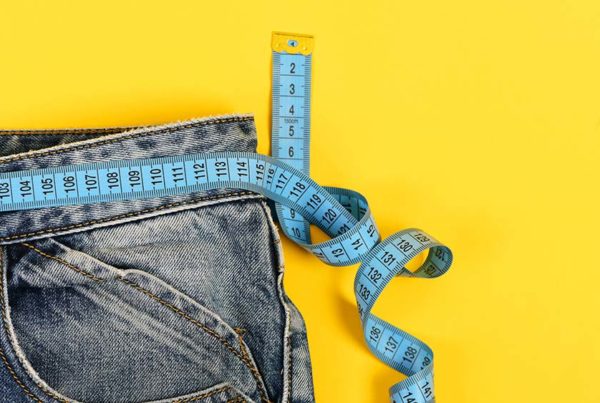
The Importance of pH and diet.
As ones body fat content increases, so does the incidence of problems in teeth and gums. It’s commonly seen in children, where rising body fat parallels the incidence of cavities, but adults are not immune. One obvious cause is the consumption of sugar and other refined carbohydrates in both liquids and other foods, which poses two problems: First, almost half of these foods are converted to body fat and stored, even foods that are fat-free. Increased body fat is associated with chronic inflammation, a body-wide condition also linked to gingivitis and other pathological changes in the mouth. Second, higher intakes of refined carbohydrates lower the body’s overall pH—the measure of acid-alkaline balance important for overall health—to unhealthy levels. In particular, the pH of the saliva is reduced. Low oral pH is a primary factor in cavity production at all ages—those whose oral pH is normal have significantly less tooth decay.
Despite our understanding of these problems and their causes, most healthcare practitioners, including dentists, don’t usually direct their efforts to prevent these conditions but instead treat the end-result signs and symptoms. Before discussing specific dental issues, let’s look at one of the most important primary factors you can address.
Oral pH
The environment of the mouth is a critical part of its overall health, especially the pH of the saliva. And it can influence the rest of the gut, and virtually the whole body. In addition, the pH in the mouth may reflect the body’s overall fat-burning ability—those with lower pH levels typically have reduced fat burning frequently associated with signs and symptoms such as increased body fat and low energy. By improving the diet, building your aerobic system, and increasing fat burning, your oral pH, among other things, should improve.
The acid-alkaline balance in saliva can be measured with pH paper, available at a pharmacy, health store, or online. The pH of the mouth should be slightly alkaline, in the range of about 7.4 to 7.6 (slightly higher in children). You may hear or read that the mouth should be an acid pH, but this is confused with the fact that many people have a mouth with a pH in the acid range—6.0, 6.5, 6.8, and so forth. (A pH of 7.0 is neutral; above is alkaline and below is acid.)
Here’s the procedure to test your pH:
- Wait about fifteen minutes after eating or drinking, or completely rinse your mouth with water and wait about five minutes.
- Use a small strip of pH paper and thoroughly moisten it in your mouth for about five seconds.
- Immediately compare the color on your test strip with the color on the pH paper container to determine the approximate pH.
Initially, perform this test two or three times in one day, then again a few days later to establish your average pH level—although it should not vary by much if you follow the above procedure properly. If your pH is consistently too high (above 7.6), it may indicate a need to increase natural carbohydrates in the form of fruits. But if your pH is too low, it may indicate two things: you’re eating too many refined carbohydrates, and you need to add more protein and fat to your diet. After making the appropriate dietary changes, check the pH twice a week to follow progress; improvements in pH could take up to a month or more.
In children and adults, low pH—less than 7.0—promotes tooth decay. While in practice I noticed those individuals with proper pH did not get cavities, but those who had tooth decay almost always had low pH.
Proper salivary pH is important to protect the environment of the mouth, especially the tooth’s enamel and the regulation of healthy bacteria that normally reside there. Eating sugar-laden foods dramatically increases the risk of cavities. This occurs for two reasons. First, sugar and most carbohydrate foods trigger changes in the mouth that shift the environment enabling unhealthy bacteria to reside there. Normally, healthy strains of bacteria reside in the mouth, but with poor diet the unhealthy bacteria take over, and convert some of the sugar to lactic acid, further reducing the pH and promoting tooth decay. Second, consuming sugar and other high-glycemic foods affects the body’s metabolism, reduces fat burning, and also lowers oral pH even when there is no sugar residue in the mouth—and even right after brushing. This lower pH environment is perfect for unhealthy bacteria to thrive and damage the teeth and gums.
The unhealthy bacteria in the oral cavity promote demineralization of the teeth—the loss of calcium. This can result in decay and loss of teeth, and dislodging of old fillings.
In a healthy mouth, the normal bacteria include Streptococcus sanguinis, made up of a number of species. These bacteria are found in saliva, and is also absorbed by dental plaque, where they modify the environment to make it less hospitable for the various strains of unhealthy Streptococcus that cause cavities.
Unfortunately, with the regular intake of refined carbohydrates, unhealthy bacteria are common. Once inside plaque the bacteria continue to maintain an acid environment promoting tooth decay and demineralization.
The influence of fresh fruit on oral pH and bacterial is minimal because, with normal saliva production, the mouth is quickly cleared of these natural sugars. But with sucrose (white-table sugar), which is the most common sugar consumed, and cooked starch (such as bread, pasta, and other grains), the mouth is unable to rapidly remove the residue due to the stickiness of these foods. This increases the risk for lower salivary pH.
A sufficient amount of chewing stimulates the increased production of saliva to help with the rinsing effect of the mouth, and maintains a healthy pH. At the end of a meal, eating foods that raise oral pH can also help maintain the proper environment. A number of studies show that even a small serving of natural cheese works well.
Practice Good Oral Hygiene
Going to see your dentist should be habit-forming. But we often leave the dentist chair armed with conflicting recommendations. A recent study published in the International Journal of Paediatric Dentistry found that “oral hygiene messages delivered by professional organizations showed inconsistencies and lacked scientific support.” Much of this confusion is due to dental-based companies giving away free products, such as that complimentary toothbrush or tube of toothpaste you receive after your visit.
The answer to dental problems is not simply brushing, using mouthwash and flossing. Most people already do that and still have unhealthy teeth and gums.
The mouth is really no different than the rest of the body, with teeth, gums and other living tissues relying on a healthy diet, optimal circulation, avoidance of chronic inflammation, and well-functioning immune system. So this is the place to start when it comes to the building and maintaining the best teeth and gums.
By avoiding poor health and chronic illness, you’re more likely to have healthier teeth and gums. For example, more severe periodontal disease is higher in patients with heart disease.
Optimal pH is also one of the more important ways to better dental health.
Companies making unhealthy products have clearly infiltrated the dental profession and it’s often difficult to distinguish between safe recommendations and marketing hype. You should avoid toothpastes that are made with unhealthy ingredients such as fluoride, artificial sweeteners (including aspartame, saccharine, acesulfame-k, sucralose), sodium lauryl sulfate, and other artificial ingredients.
Also stay clear of mouthwashes with these and other unhealthy ingredients, including alcohol, which can dry out the mouth.
Brushing and a water pick are very effecting at removing food particles and plaque, two important aspects of oral health.
Don’t procrastinate either. Take care of dental problems if they develop—the sooner they are successfully treated the better. However, finding the right dentist is equally important. When in doubt, don’t hesitate to get a second opinion, especially if your dentist recommends seemingly more extreme or costly procedures.
Like other aspects of a healthy body, diet plays a key role in oral health. The single most important factor here is that by avoiding refined carbohydrates, your mouth will be significantly healthier. In fact, it’s unlikely you’ll have a healthy mouth long-term no matter how often you brush, floss, and get cleanings and regular check ups, if you continue eating refined carbohydrates.








